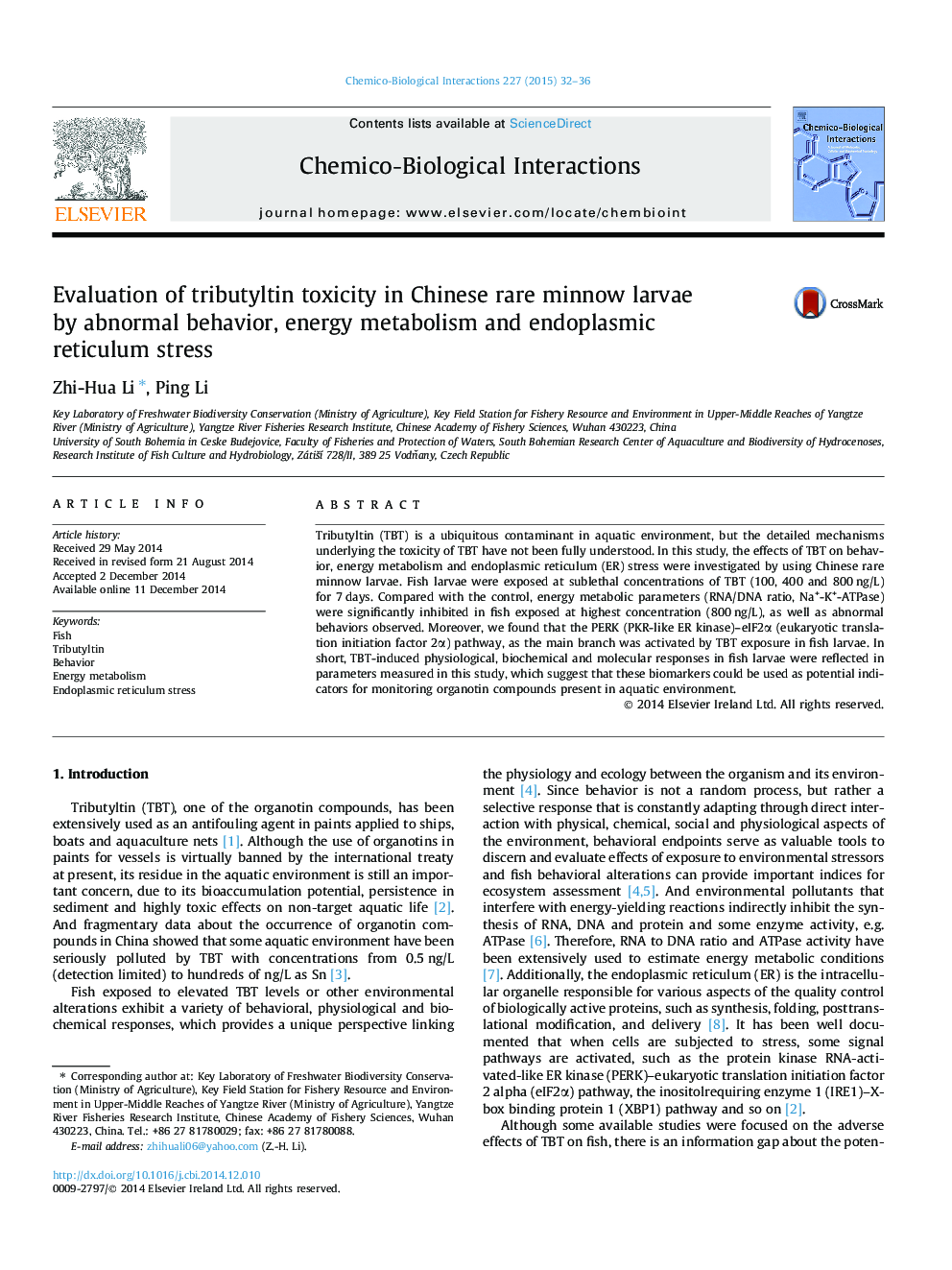| کد مقاله | کد نشریه | سال انتشار | مقاله انگلیسی | نسخه تمام متن |
|---|---|---|---|---|
| 2580299 | 1561614 | 2015 | 5 صفحه PDF | دانلود رایگان |
• Exposure to TBT caused behavioral disorders in fish larvae.
• Energy metabolism was modulated in fish larvae under TBT stress.
• Environmental levels of TBT could result in the ER stress in fish larvae.
Tributyltin (TBT) is a ubiquitous contaminant in aquatic environment, but the detailed mechanisms underlying the toxicity of TBT have not been fully understood. In this study, the effects of TBT on behavior, energy metabolism and endoplasmic reticulum (ER) stress were investigated by using Chinese rare minnow larvae. Fish larvae were exposed at sublethal concentrations of TBT (100, 400 and 800 ng/L) for 7 days. Compared with the control, energy metabolic parameters (RNA/DNA ratio, Na+-K+-ATPase) were significantly inhibited in fish exposed at highest concentration (800 ng/L), as well as abnormal behaviors observed. Moreover, we found that the PERK (PKR-like ER kinase)–eIF2α (eukaryotic translation initiation factor 2α) pathway, as the main branch was activated by TBT exposure in fish larvae. In short, TBT-induced physiological, biochemical and molecular responses in fish larvae were reflected in parameters measured in this study, which suggest that these biomarkers could be used as potential indicators for monitoring organotin compounds present in aquatic environment.
Individual variations of biochemical and molecular parameters in Chinese rare minnow larvae exposed to TBT by using PCA.Figure optionsDownload as PowerPoint slide
Journal: Chemico-Biological Interactions - Volume 227, 5 February 2015, Pages 32–36
